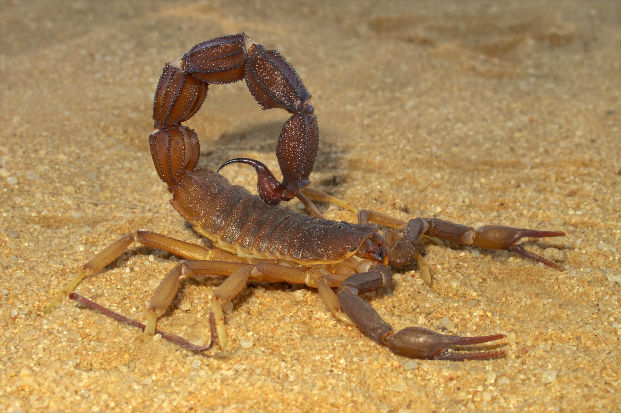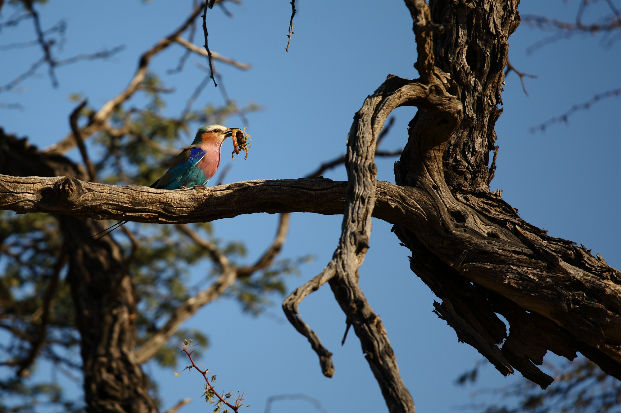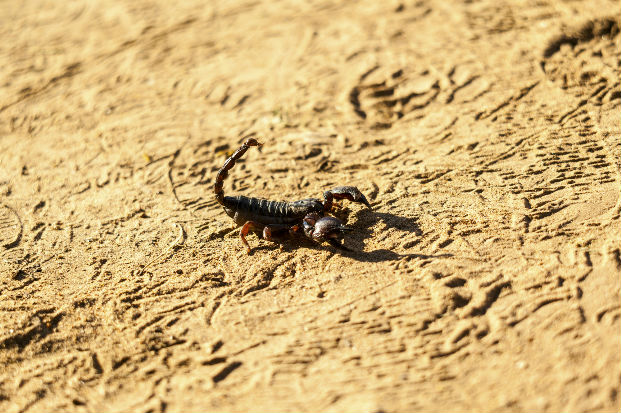
Fossil evidence reveals that scorpions date back some 425 to 450 million years. They evolved from amphibious ancestors and some were as long as 1 m. They can be found on every continent except Antarctica. In southern Africa there are at least 130 different species, however, only a few species will be found living in one area. There are two super family groups of scorpion, the highly venomous thick-tailed scorpions known as Buthoidea and the thin-tailed Scorpionidea that have large pincers but are not very venomous.
Vote for the fact you find most fascinating
Scorpions use long hair-like sensors on their pincers to detect prey by vibration and air movement.
On finding a female the male scorpion will initiate a mating dance by griping her pincers with his own. He will then move her around an area for between 30 and 60 minutes. During this time they may cover 25 metres. Some scorpions may court like this for as long as 2 days.
Before approaching a female the male scorpion will tap out a message so that she does not confuse him for prey.
There are some species of scorpion that can remain under water for more than 48 hours, some which can survive temperatures of 50° C and some that can be frozen in the ice before being defrosted with little ill affect.
The venom of scorpions contain different neurotoxins which perform different functions. Some are even used to immobilize a mate during courtship.
During courtship the male scorpion deposits a capsule of sperm, called a spermatophore, on the ground before manoeuvring the female over it. Once she is in position he will drop her on to it so that her weight releases the sperm into her genital opening.
Some species of scorpion are inactive for up to 95% of their life. This level of activity allows them to lower their metabolic rate which means that they don’t need to eat for some 8 to 12 months.
Scorpions glow green when illuminated by a UV light. However, they will not glow immediately after moulting until their exoskeleton hardens.







